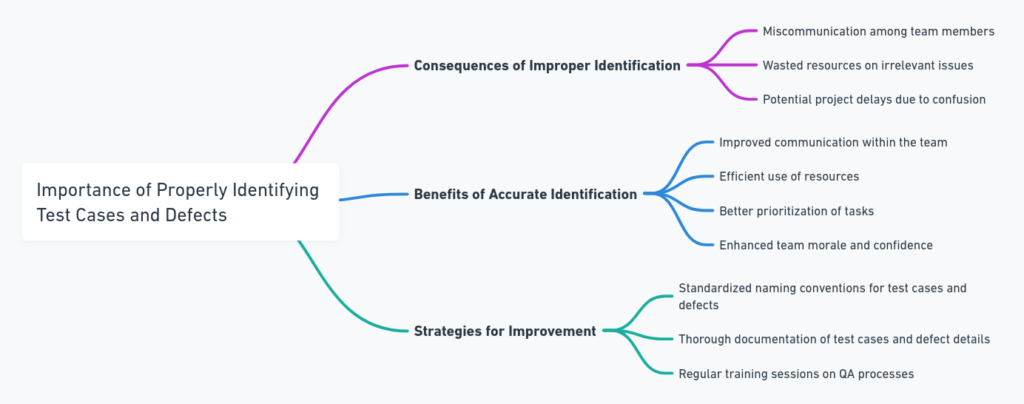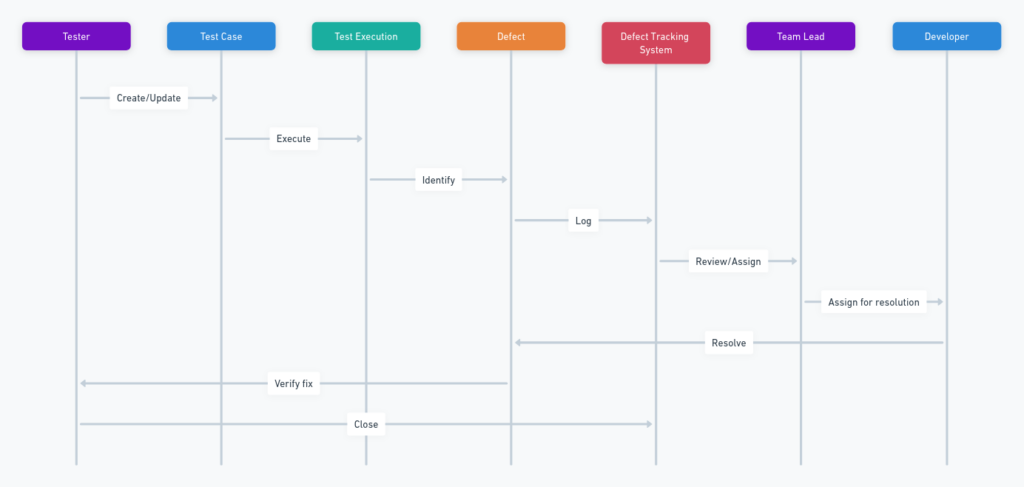The entire process relies on two fundamental concepts that are: test cases vs defects that each play a different function in the process of achieving perfect software.
Understanding the distinction between these two aspects is crucial for all people working in the field of software testing. Test cases are defined conditions in which testers evaluate the software in order to verify its capability and effectiveness.
Defects however can be defined as the differences or mistakes found in the software if the actual results are not in line with the expectations.
This distinction isn't just one-sided; it also highlights the reactive and proactive aspects in quality control.
By understanding the core of each, professionals are able to improve the efficiency of testing as well as increase the quality of software and, ultimately, contribute to the user experience to be better.
Understanding Test Cases Vs Defects in Software Testing
Definition and Purpose of Test Cases
The term "test case" in the field of software test refers to a set of conditions or variables in which testers will decide if the system being tested meets the requirements or is functioning properly. The goal of test cases can be diverse.
In the first place, they are created to find any bugs or glitches in the software that is being test. They are used as a reference to make sure that the testing process is a thorough and consistent process covering every feature and function of the software.
Test cases make the test process more efficient and helps maintain a an optimum quality of consistency and completeness in the testing process.
Additionally, properly-prepared test cases could also be used as the training materials for new testers as well as documentation to be used for reference in the future.
Definition and Impact of Defects
A defect, commonly using the terms error or bug in the field of software testing refers to anything that isn't in line with the program's intended outcome.
The effects of software errors may range from minor problems that annoy the user and can escalate to serious problems that could cause software to crash or even fail completely.
Finding and repairing problems is essential since they can impact the usability, performance, and security of the software directly impacting the quality of user experience and satisfaction.
Furthermore, defects could cause significant financial losses and damage to the image of the organization that created the software.
Key Differences Between Test Cases vs Defects
Role in Software Testing Process
The purpose of test cases and flaws during the testing process for software is distinct but interdependent. Test cases are utilized as a method to spot weaknesses in software applications.
They are proactive tools created and implemented to reveal any potential issues before software is officially released. Contrary to that, defects reflect the problems that are discovered either during or after the test execution stage.
While tests are focused on the prevention of and detection of problems the defects focus on solving the issues and identifying weaknesses in the system.
Relationship to Quality Assurance
Testing cases, as well as defects differ in relation in relation to the quality of assurance. Test cases are integral to the assurance of the high quality of software, since they are developed to evaluate all features and elements of the application against the specific standards.
They're an integral component of making a good software product. However, imperfections indicate areas in which the software is not meeting high standards of quality.
The process of identifying and fixing problems is a part in quality control. It's about fixing problems that already have occurred and testing cases aim to prevent problems from manifesting.
So, even though both are crucial to the testing of software and quality control process but their functions and impact are distinct.
Importance of Properly Identifying Test Cases and Defects

The distinction between defects and test cases is a crucial aspect of the lifecycle of software testing.
A thorough understanding and determination of each will significantly affect the efficiency that the test process as well as ultimately the quality and reliability of the.
Enhancing Testing Efficiency
The efficiency of software testing is not only about speed, but also accuracy and optimal utilization of resources.
Through identifying test cases with precision and categorizing the defects that develop, testing teams are able to improve their procedures. This exact recognition allows testers to:
- Beware of unnecessary duplication of efforts by making sure that there aren't any two testers engaged on the exact problem without realizing.
- Prioritize testing efforts based on the potential impact, allowing extra time and resources to those areas that could have the highest risk of causing catastrophic problems.
- Facilitate a more smooth test of regression by knowing the areas that could be affected by the fixes and directing on their retesting efforts based on this.
Each of these components can lead to an efficient, more efficient testing procedure that can be adapted to the requirements of the project, without wasting resources or time.
Improving Software Quality
The primary objective of any test process is to enhance its quality. Software is a. The proper detection and control of test scenarios and flaws directly contribute to this through:
- Ensuring that the software is fully covered by the software's capabilities and user needs, thus reducing the chance of features that have not been tested being introduced into production.
- Early recognition and classification of flaws that can alert the development team of potential quality issues earlier that is easier and less expensive to correct.
- Creating feedback loops where problems are not just identified, but determined to be the root cause, thus preventing similar issues from happening later on.
This systematic approach to identify and manage the test cases and issues is vital to creating the highest quality software that exceeds or meets customer expectations.
Best Practices for Managing Test Cases and Defects

Implementing efficient strategies to manage testing cases and identifying problems is crucial to a smooth testing. Here are some top strategies to think about.
Utilizing Test Case Management Tools
Utilizing tools for managing test cases will greatly enhance the efficiency and effectiveness of the process of testing. They can help:
- Organizing test case in a logical and easy-to-access way.
- Tracking the test's progress and identifying areas not tested.
- Facilitating modifications and reuses of test cases when the project develops.
- Reports that are comprehensive and assist in making decisions and planning.
With the tools available, groups can make sure that no detail is missed and that all efforts to test are in line to the objectives of the project.
Implementing Defect Tracking Systems
Systems for tracking defects are crucial to effectively managing defects discovered when testing. The systems enable teams to:
- Describe the defects in detail, with the steps needed to reproduce them, their intensity and the impact.
- Remit the issue to the right team or developer for resolution.
- Monitor the condition of the defect from its onset to resolution.
- Get insights into defects, which will inform the future development and testing initiatives.
With a centralized system to manage defects Teams can be sure that critical issues are not left unnoticed and that all defects are dealt with efficiently and promptly way.
Collaboration Between Testing and Development Teams
Collaboration between teams of development and testing is crucial to effectively manage tests and issues. This type of collaboration helps:
- Identifying potential problems through constant communication.
- A better understanding of requirements of the system and its complexities that will lead to more effective testing cases.
- A more receptive approach to resolving defect issues that involves testers and developers working together to identify and address problems.
- Continuous feedback helps in improving the development and testing processes.
Inspiring a culture of cooperation and open communication among the teams doesn't just increase the effectiveness of the testing process, but is also a significant contributor to the overall quality of software.
Book a Demo and experience ContextQA testing tool in action with a complimentary, no-obligation session tailored to your business needs.
Conclusion
In the field in software test, knowing the difference between test scenarios and flaws is essential for the efficient evaluation and improvement for software applications.
Test cases are the specific circumstances in which tests are conducted to check a particular characteristic or function of the software, in order to find any defects that could be present.
However, imperfections are the differences between the anticipated and actual outcomes that are found in the course of or following the execution of tests.
- Test cases are crucial to continuously evaluate every aspect of software, providing complete coverage and the identification of possible flaws.
- Defects that are discovered through the testing of cases reveal areas in which the software does not satisfy the requirements that were set out in the initial test case or the expectations of customers.
In fundamental terms both play crucial roles in the process of testing software. Test cases assist testers in an outlined evaluation procedure as well as the detection and resolution of problems can improve the quality of software and its reliability.
Understanding the complex relationship between defects and test cases is essential to improve the efficiency of testing and attaining the highest level of software performance.
Also Read - The Future of Automated Security Testing: AI and Machine Learning Integration
We make it easy to get started with the ContextQA tool: Start Free Trial.
